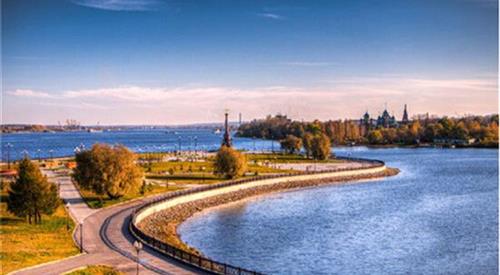Listen to part of a lecture in an archaeology class.
聽一段考古學課程。
It's every archaeologist's dream to find a lost civilization, to make some huge discovery, to find artifacts no one else has laid a hand on in millennia.
每個考古學家都夢想能發(fā)現一個失落的文明,有重大發(fā)現,發(fā)現千年來都沒人碰過的古器物。
You might think that this never happens any more, given all the research in archaeology that's been done.
鑒于考古學界已有的研究,你們可能覺得這不會再發(fā)生了。
But in the late twentieth century, archaeologists discovered the remains of a sophisticated people whose settlement might have been the hub of a civilization few people even thought existed.
但在20世紀晚期,考古學家發(fā)現了一群高級人的遺體,這個聚落可能正是一個文明的中心,而沒有多少人相信這個文明的存在。

They found this site at the edge of a desert in Turkmenistan, in central Asia, where a series of mounds rise up from the plains.
在中亞,人們在土庫曼斯坦沙漠邊上發(fā)現了這個地方,在這里的平原上有好幾個土堆。
Now, you might remember because we've talked about this, archaeologists know that mounds such as these are the kinds of geological features that indicate the presence of ancient settlements. Jim?
你們應該記得(因為我們曾講過這個),考古學家知道,這種類型的土堆是一種地理特征,表示這里可能出現過古代聚落。吉姆?
Um…mounds can be different things, right? Some are burial places…
土堆可以是別的東西吧?有些土堆是墓地……
Exactly. And some are the remains of cities.
正確。還有的是城市遺址。
The inhabitants would build houses and temples you know, what have you.
居民會建房子和寺廟等等。
And over time, those buildings would fall down or be torn down and then be built over.
隨著時間推移,這些房子倒塌了,或被拆掉以建新的房子。
Over time, generations of building and rebuilding in the same area would result in a large hill the size of a city.
久而久之,同一地區(qū)不斷建房和再建,可能會導致一個城市大小的山丘產生。
Careful excavation and documentation of layers in a mound can reveal a wealth of information about the everyday life of a people in a settlement over many periods of occupation.
對土堆不同層次的挖掘和記錄能告訴人們大量信息,能告訴人們在不同時期占據此地的聚居人群的日常生活。
Now, this particular site is called Gonur-depe.
這個特殊的地點叫哥諾德帕。
What was found at Gonur-depe was amazing: the ruins of a huge palace complex, the foundations of shops and houses, the remains of thick walls and towers that fortified the city.
人們在哥諾德帕的發(fā)現是無比驚人的:巨大的宮殿群廢墟、房子和商店的地基,還有用于城市防御的厚墻和高塔殘骸。
There was even an elaborate canal system and a lot of very intricate jewelry.
那兒甚至還有精細的運河系統(tǒng)和大量精致珠寶。
All these findings seem to indicate that they are the remains of an ancient civilization that was every bit as advanced as other more famous civilizations of the time, like those in Egypt, or, or China.
這些發(fā)現似乎都表明,這些東西都是一個古代文明的遺跡,而這個文明和當時其他著名的文明一樣先進,像印度或中國的文明。
And the site dates back to 3,000 B.C.E.
這個地方可追溯到公元前三千年。










